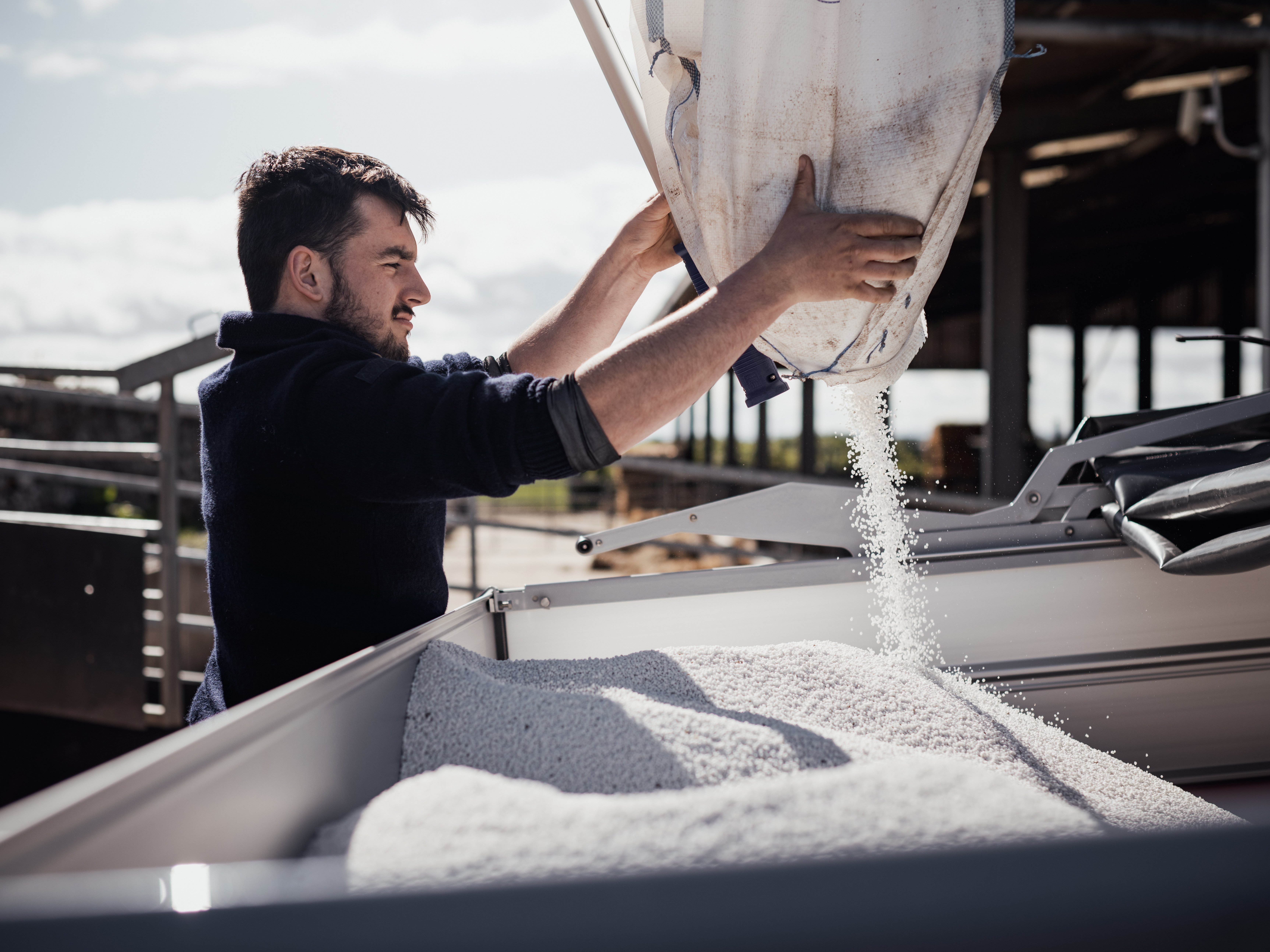Sponsored Article
What to look out for when buying fertiliser
Sponsored Article

To enhance soil fertility farmers should have a clear understanding of what they’re spreading on their fields.
It may be tempting to prioritise nitrogen and go for the cheapest option, but will this sustain long-term soil health? Will it deliver ongoing environmental sustainability?
Nitrogen is not the only nutrient needed to maximise grass growth. A deficiency in any key nutrient will impact yield and have an ongoing impact on soil condition, impacting future grass harvests and the economic viability of Irish farms.
A full complement of macronutrients (nitrogen, phosphate and potassium) is essential to maintain soil fertility.
This is why NPK (nitrogen, phosphorous, potassium) fertilisers are so popular. In Ireland, five NPK grades make up 75% of the Irish fertiliser market and over 200,000 tonnes of a 18-6-12 graded NPK is sold every year.
But the fertiliser grade and price should not be the only considerations of purchase if you want to make the most of your investment. Farmers should also consider the physical condition of the fertiliser they’re buying.
NPK fertilisers are convenient to spread, applying all macronutrients in one application. But is every NPK fertiliser capable of producing an even spread of nutrients across a field, and why is this important?
Complex Compound Fertilisers
Yara has seen increasing demand in Ireland for its YaraMila Complex Compound Fertilisers (CCF) which is differentiated from the blended NPK products on the market as it combines all nutrients in each individual granule.
Blended products just tip the different nutrients into one bag and mix them up, hoping for the best.
YaraMila is the brand name for Yara’s NPK product range. If the product name is preceded by ‘YaraMila’, it is a guaranteed Complex Compound Fertiliser, produced in one of Yara’s European plants.
The difference between a YaraMila product and a typical NPK blend simply comes down to physical quality and composition, but this makes all the difference in performance across a field.
In a YaraMila NPK fertiliser, every granule contains every nutrient: Nitrogen, phosphorus and potassium. Additionally, every granule has the same physical characteristics - same size, weight and bulk density ensuring that there is no disparity as you spread it across the field, leading to a more even, accurate spread.
If you compare this to a blended NPK fertiliser product, you’ll see that each nutrient granule is different in nutrient content, size, shape, weight and bulk density. These differences may seem slight, but once the mix of granules is in the hopper and spread across a field, you’ll see an uneven and patchy application of the required nutrients.
Whilst immediate effects of an uneven spread may only be visible in extreme cases (you could see striping), the long-term impacts of imprecise nutrient application can cause a significant financial loss.
A study in New Zealand calculated that on dairy farms after a five-year period, the annual economic loss of unevenly applied phosphorus and sulphur was NZ$401/ha.
It’s a particular problem for phosphorus as we know that this nutrient is less mobile in the soil than others, so if you don’t achieve a good distribution of this nutrient, then patches of your field will experience deficiency which will impact yield and quality in the short term and undermine long-term soil fertility.
A YaraMila grassland grade will have 10 times more phosphorus landing sites than an equivalent blended product.
Measuring efficient fertiliser spread
The best way to measure the efficiency of your spread is by calculating the co-efficient of variation (CV) using a tray test. This will assess not only the fertiliser spreading capacity but also the effectiveness of your spreader.
The lower the CV value, the better: A CV of over 15% will result in financial loss as it will be detrimentally affecting soil fertility and crop performance, now and in the long term.
But when testing CV you need to keep one thing in mind: It’s easier to test the CV of a CCF product as it is a true measure of how even each nutrient is being spread. But for a blend, you may see a low overall CV which might indicate a good spread pattern, but it can mask high CV’s for individual nutrients.
Fertiliser quality
Here's what you need to know about fertiliser quality:
Bulk density is the weight of a given volume of fertiliser and measures how heavy a fertiliser is; the higher the bulk density the better. It will affect how far a fertiliser granule can be spread - think of it like as a comparison between a ping pong ball and a golf ball: they’re both the same size, but you can throw a golf ball much further. YaraMila products have a high bulk density (1.0 kg/L).
Size of fertiliser granules (measured diameter in mm). Similar to bulk density, bigger particles can be thrown further as they’re heavier, so we’d recommend that 80% of the fertiliser product should have a size range of 3.3–4.75 mm. Quality control at Yara plants ensures under and over-sized particles are screened out before shipping, minimising disparity within the product so you can achieve an even spread of nutrients across your field.
Shape of fertiliser particles should preferably be rounded and smooth to achieve better aerodynamics and spreading trajectory. YaraMila products are spherical in shape, which allows for more accurate spreading.
Hardness of fertiliser granules will protect against damage within a spreader. If granules are crushed before spreading, you’ll see a lot of dust which will negatively affect the spread pattern across your field. YaraMila granules can withstand at least 3 kg (30 N) in force.
Buying fertiliser
Many farmers put a lot of work into soil testing and developing a nutrient management plan to maximise yield and quality. Putting the same thought into your fertiliser purchase will prevent undermining this effort.
Fertiliser is no longer a commodity purchase, it should be a careful purchase choice to ensure that you are able to benefit from an accurate spread of nutrients across your field maximising the return on investment.
Buying a cheaper blend may well undermine all the effort farmers go to in creating a nutrient management plan in the first place and create more problems for soil fertility in the future.
Watch this video to find out more about YaraMila Complex Compound fertilisers and why your crops deserve only the best NPK nutrition.
Alternatively, go online by clicking here.
Sponsored Article







